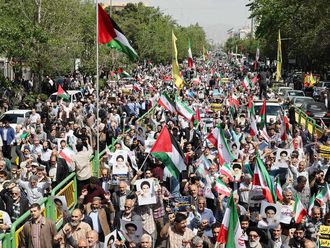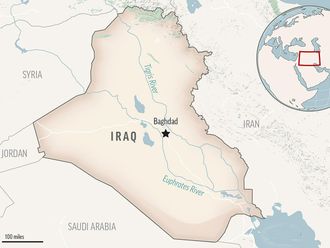Beirut: The evacuation of thousands of Syrians from four besieged areas resumed on Wednesday, state media and activists said, days after a bombing killed more than 120 evacuees and delayed the widely criticised population transfer.
The Central Military Media says 3,000 residents of two pro-government villages, Foa’a and Kefraya, left on Wednesday in 45 buses bound for government-controlled Aleppo. Another 11 buses carrying some 500 people, including opposition fighters, left Madaya and Zabadani, near Damascus, heading toward the northern rebel-held Idlib province.
The opposition-run Syrian Observatory for Human Rights also reported the transfer, which it says includes 800 armed men from both sides. Some 160, mostly gunmen, had remained in Zabadani.
Soon after the buses left Zabadani, state TV declared the town free of gunmen. The government-controlled Central Military Media later said an area of about 50 square kilometres has become clear of all opposition fighters.
After repeated delays, the first phase of the deal began on Friday. Some thirty hours after the first two batches reached exchange points, a massive explosion struck near buses carrying evacuees from the pro-government areas, killing more than 120, mostly women and children. Many of the rebel fighters who guarded the buses were also killed. No one claimed responsibility for the attack, which the government blamed on the rebels.
Reflecting fears of further violence, Amer Burhan, a medical worker from Zabadani, said buses carrying residents from the pro-government areas were held in the opposition areas until the busses carrying rebels had departed.
Hussain Al Ragheb, a member of the Syrian parliament, told state TV that another 8,000 residents have yet to be evacuated from Foa’a and Kefraya. Rami Abdurrahman, the head of the Observatory, said more evacuations from rebel-held areas south of Damascus are also expected.
The transfer deal is not overseen by the United Nations. Critics say the string of evacuations, which could see some 30,000 people moved across battle lines over the next 60 days, rewards regime siege tactics and amounts to forced displacement along political and sectarian lines.
All four areas have been under siege for years, their fate linked through a series of reciprocal agreements that the United Nations says have hindered aid deliveries.
Residents of Madaya and Zabadani, formerly summer resorts, joined the 2011 uprising against President Bashar Al Assad. Both came under government siege in the ensuing civil war. Residents of Foa’a and Kefraya, besieged by the rebels, have lived under a steady hail of rockets and mortars for years, but were supplied with food and medicine through military airdrops.












